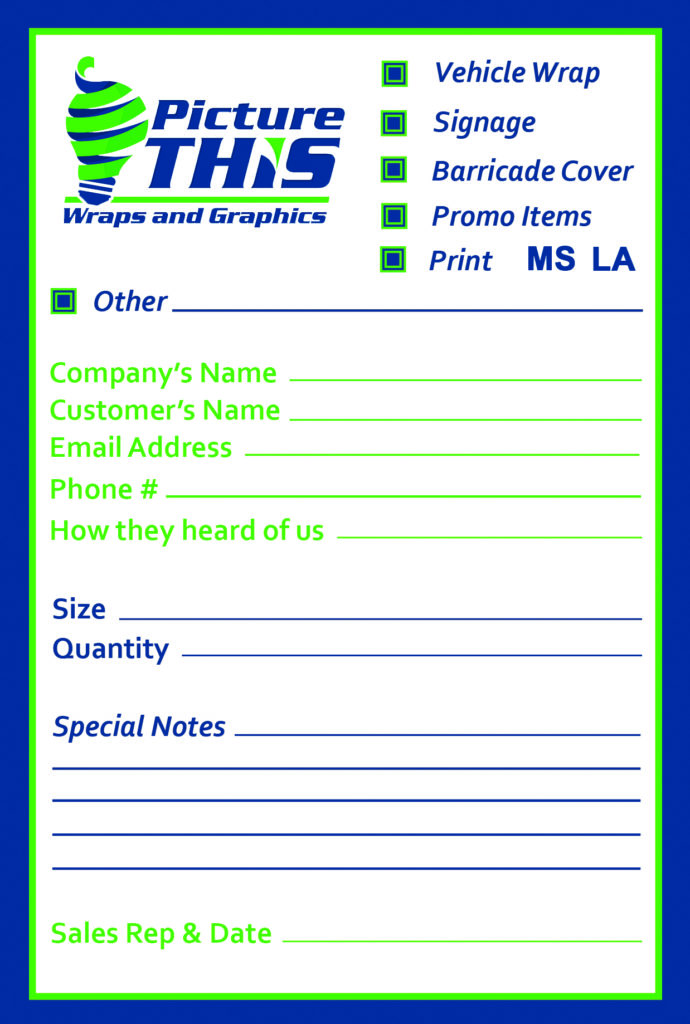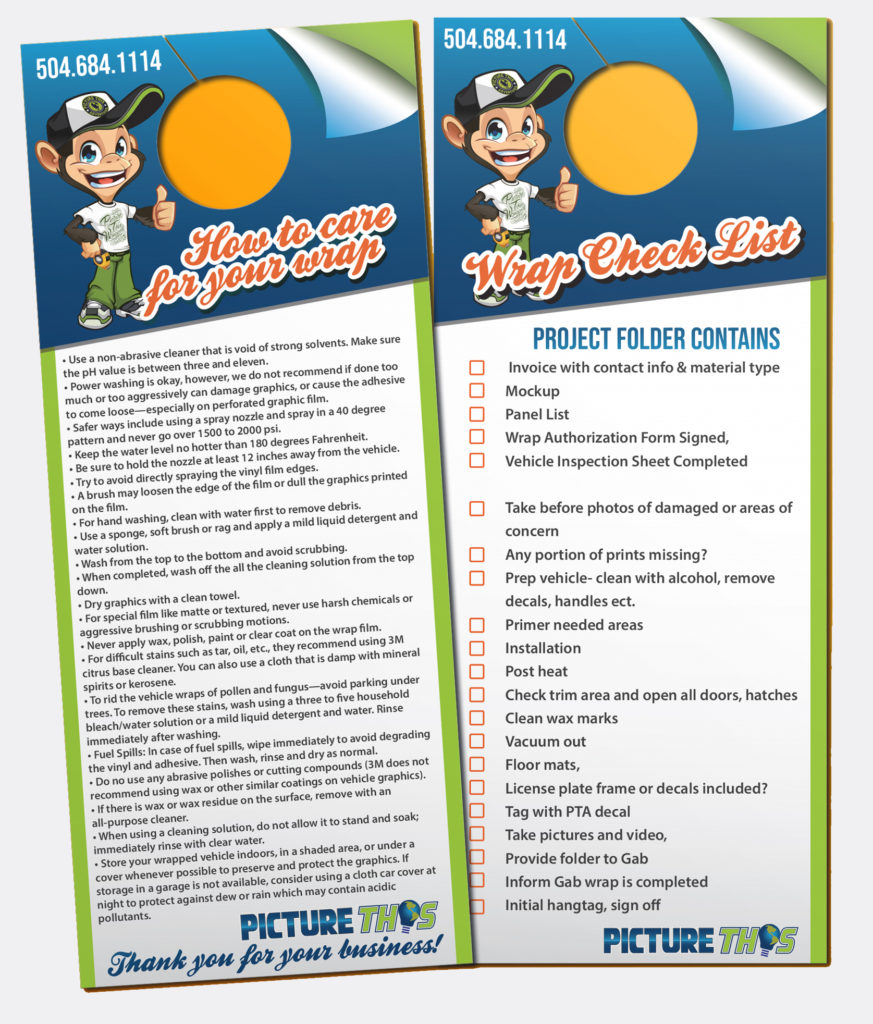A standard operating procedure (SOP) is a set of step-by-step instructions compiled by an organization to help workers carry out routine operations. SOPs aim to achieve efficiency, high-quality output, and uniformity of performance while reducing miscommunication and failure to comply with industry regulations. But creating standard operating procedures is much easier said than done.
In the world of wraps and signage, every step along the process to get the job completed can be as important as the one before it, and with commercial wraps, there can be a lot of steps.

Here at Picture This Wraps and Graphics, we have learned every move is so important and, when not performed correctly, could result in expensive and timely challenges. For these reasons, we feel it is vital to have a detailed SOP laid out for each division of the company and each person’s duties and how to have them done properly before moving onto the next step.
It did help that I started this business in my house as a one-person operation, so at one time, each team member’s responsibility fell solely on me. This allows me to better understand the tasks that need to be completed and most of the challenges that can appear with each. So many mistakes are made because a small five-minute task was overlooked, resulting in much more time needed later down the line.
Once I realized how important it is to list our SOPs, I started by writing down bullet points of the obvious steps that need to be done, such as quoting a client, making an invoice, designing, production, and installation. Then, it was a constant addition of steps either before or after each point, and they just kept adding up to more and more steps. Finally, when each was listed, we moved them to a flow chart to see the process flow more easily. Next, we color-coded each step into different departments to see what each is responsible for and the order it should follow.
Now, with everyone knowing their jobs, we can hold everyone accountable when a duty is not performed correctly. Knowing what went wrong and where can help you better figure out how to address this challenge and keep it from repeating.
The SOPs have also been very helpful in training new hires or relieving staff members when they leave for vacation or unexpected life occurrences pull them away. The color-coded workflow chart helps someone who isn’t familiar with the job duties to better understand what is expected of them and how to step into a new responsibility.

I find infographics and flow charts to be easier to read and absorb all the information given. For this reason, we also try to be forward-thinking and figure out other areas we can use this workflow chart and even share it with our clients upfront. For example, we have text templates already set up in Gmail Templates for faster quote request times and other regular responses we seem to repeat often. Another example is our “game plan” we provide our clients — it offers a better understanding of how we tackle their wrap project and what should be expected.
Identifying each of the steps needed can take a daunting amount of time and effort but pays off in dividends in the end. From saved time in the future to improved team efficiency and better communications with your clients, the benefits are many. Every time we have added a step, two more seem to pop up; however, each one helps us get down the road to our success.




